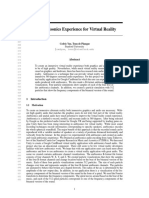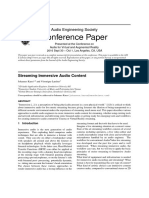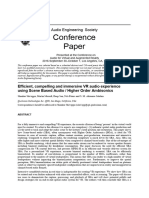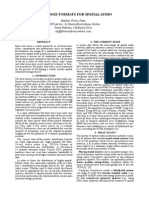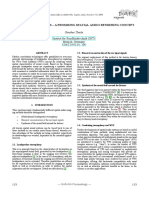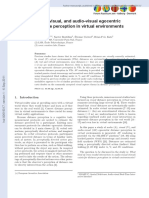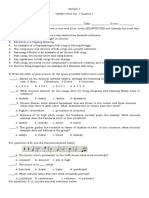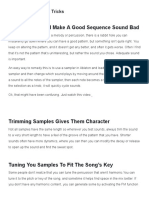0% found this document useful (0 votes)
8 views7 pagesSound Spatialization
The document discusses sound spatialization, emphasizing its importance in immersive virtual reality (VR) through efficient sound simulation and interaction. It covers key components such as source modeling, room acoustics, and receiver modeling, while exploring different reproduction methods including headphone and loudspeaker setups. The text also highlights the challenges of achieving perceptually plausible auralization while managing computational resources and memory constraints.
Uploaded by
sm7tg2xzydCopyright
© © All Rights Reserved
We take content rights seriously. If you suspect this is your content, claim it here.
Available Formats
Download as PDF, TXT or read online on Scribd
0% found this document useful (0 votes)
8 views7 pagesSound Spatialization
The document discusses sound spatialization, emphasizing its importance in immersive virtual reality (VR) through efficient sound simulation and interaction. It covers key components such as source modeling, room acoustics, and receiver modeling, while exploring different reproduction methods including headphone and loudspeaker setups. The text also highlights the challenges of achieving perceptually plausible auralization while managing computational resources and memory constraints.
Uploaded by
sm7tg2xzydCopyright
© © All Rights Reserved
We take content rights seriously. If you suspect this is your content, claim it here.
Available Formats
Download as PDF, TXT or read online on Scribd
/ 7

























